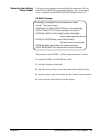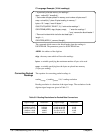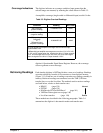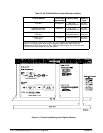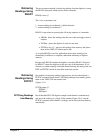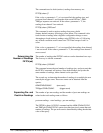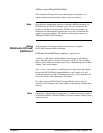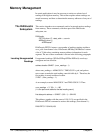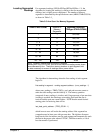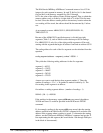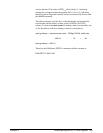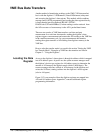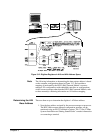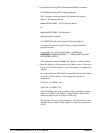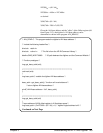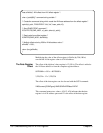
Locating Segmented
Readings
For segmented readings (SENSe:SWEep:OFFSet:POINts ≤ -3), the
algorithm for locating the readings is similar to that for unsegmented
readings, but is slightly more complicated. The number of memory
segments is determined by the specified arm count (ARM:STARt:COUNt)
as shown in Table 3-5.
The algorithm for determining where the first reading of each segment
begins is:
first reading in segment = ending segment address - (num_readings - 1)
where num_readings = TRIG:COUN + pad, and pad are extra counts to
make the total reading count divisible by 4. The memory partition
composed of num_readings is circular, and if large amounts of pre-arm data
(readings) are taken, the data keeps overwriting itself until the arm is
received and the post-arm count finishes. NOTE that the actual desired
starting point for retrieving data will be:
last_data_point_address - (TRIG_COUN - 1)
which in most cases will not be the starting address if the segment has
wrapped around at least once with pre-arm data. The digitizer firmware
keeps track of the last address used in each segment and automatically reads
the data in the proper order when a FETCh?, VME bus transfer, or Local
bus data transfer is performed.
ARM:STARt:COUNt Number of
Memory
Segments
Maximum Readings
(TRIGger:STARt:COUNt)
1 1 524,288
2 2 262,144
3 - 4 4 131,072
5 - 8 8 65,536
9 - 16 16 32,768
17 - 32 32 16,384
33 - 64 64 8,192
65 - 128 128 4096
NOTE: If the non-volatile mode of memory is enabled
(MEMory:BATTery:STATe ON), then all of the maximum reading counts shown
above decrease by four. These four memory locations in each segment hold
the data necessary to recover all readings after a power failure.
Table 3-5. Arm Count Vs. Memory Segments
Chapter 3 Understandin
g
the HP E1429 Di
g
itizer 143



